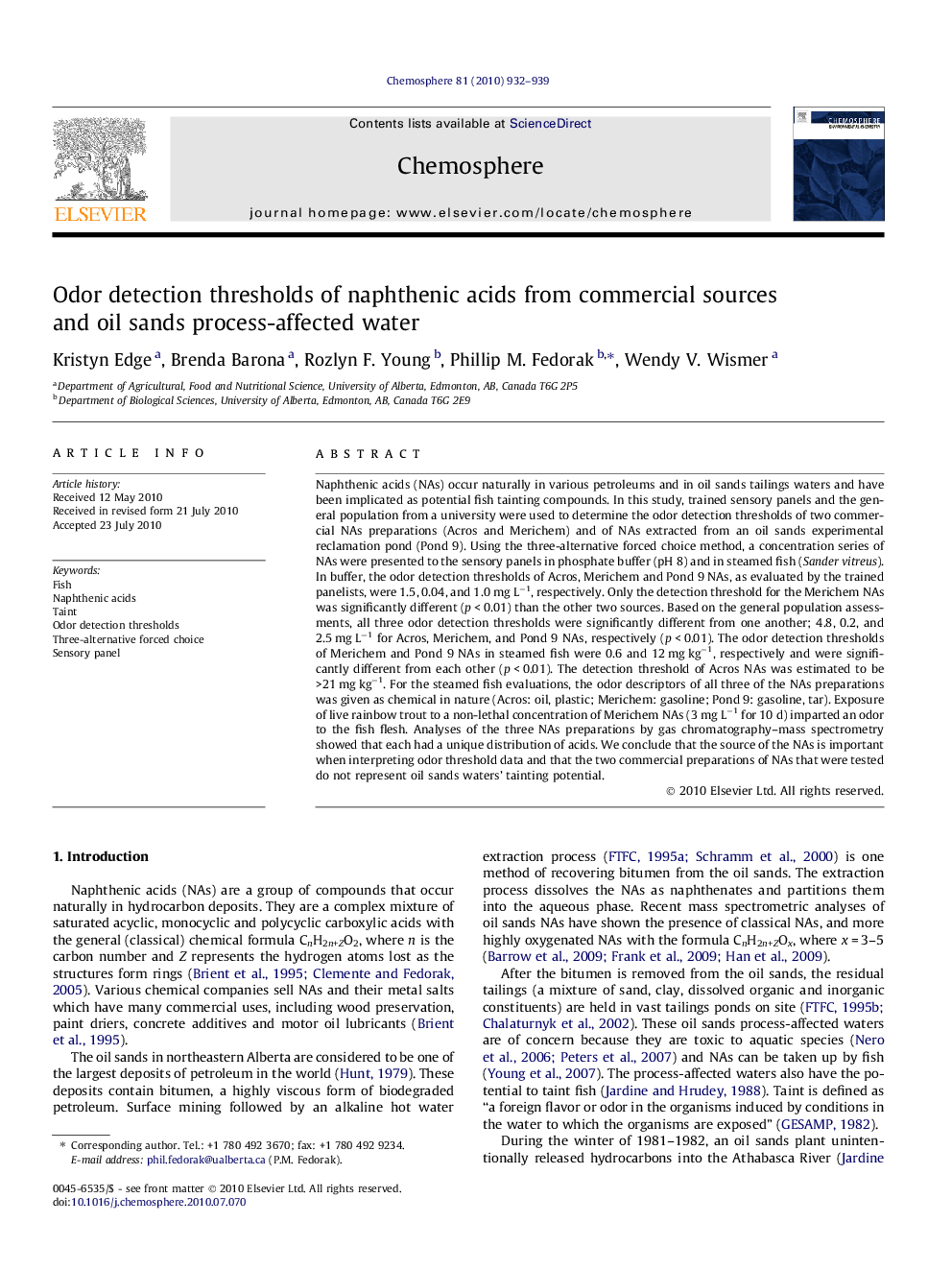| Article ID | Journal | Published Year | Pages | File Type |
|---|---|---|---|---|
| 4411108 | Chemosphere | 2010 | 8 Pages |
Naphthenic acids (NAs) occur naturally in various petroleums and in oil sands tailings waters and have been implicated as potential fish tainting compounds. In this study, trained sensory panels and the general population from a university were used to determine the odor detection thresholds of two commercial NAs preparations (Acros and Merichem) and of NAs extracted from an oil sands experimental reclamation pond (Pond 9). Using the three-alternative forced choice method, a concentration series of NAs were presented to the sensory panels in phosphate buffer (pH 8) and in steamed fish (Sander vitreus). In buffer, the odor detection thresholds of Acros, Merichem and Pond 9 NAs, as evaluated by the trained panelists, were 1.5, 0.04, and 1.0 mg L−1, respectively. Only the detection threshold for the Merichem NAs was significantly different (p < 0.01) than the other two sources. Based on the general population assessments, all three odor detection thresholds were significantly different from one another; 4.8, 0.2, and 2.5 mg L−1 for Acros, Merichem, and Pond 9 NAs, respectively (p < 0.01). The odor detection thresholds of Merichem and Pond 9 NAs in steamed fish were 0.6 and 12 mg kg−1, respectively and were significantly different from each other (p < 0.01). The detection threshold of Acros NAs was estimated to be >21 mg kg−1. For the steamed fish evaluations, the odor descriptors of all three of the NAs preparations was given as chemical in nature (Acros: oil, plastic; Merichem: gasoline; Pond 9: gasoline, tar). Exposure of live rainbow trout to a non-lethal concentration of Merichem NAs (3 mg L−1 for 10 d) imparted an odor to the fish flesh. Analyses of the three NAs preparations by gas chromatography–mass spectrometry showed that each had a unique distribution of acids. We conclude that the source of the NAs is important when interpreting odor threshold data and that the two commercial preparations of NAs that were tested do not represent oil sands waters’ tainting potential.
